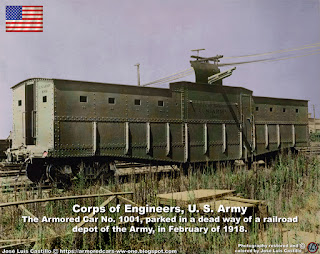Experimental German Beute Panzerauto (Captured Armored Car) Peugeot (Belgian "Auto-Mitrailleuse" captured in Galicia(*) in September 1916), equipped with the Apollo-Walze mechanism in 1917, designed to optimize the cross-country perfomance of the vehicles.
(*) Galicia, Austrian region occupied by the Russians in 1914.
He was subsequently (in the same year), stripped of the main mechanism, but maintained the transformation performed for anchoring the large wheels.
He served, first in Pz.Kw.MG.Abteilung-1 and later in Pz.Kw.MG.Zug-8.
In 1919, with the name "Raudi" was used by the Freikorps in the reconquest of Munich (Bavarian Soviet Republic). He was rearmed with a Becker 2 cm gun.
(*) Galicia, Austrian region occupied by the Russians in 1914.
He was subsequently (in the same year), stripped of the main mechanism, but maintained the transformation performed for anchoring the large wheels.
He served, first in Pz.Kw.MG.Abteilung-1 and later in Pz.Kw.MG.Zug-8.
In 1919, with the name "Raudi" was used by the Freikorps in the reconquest of Munich (Bavarian Soviet Republic). He was rearmed with a Becker 2 cm gun.
********************
El Beute Panzerauto (Coche Blindado capturado) experimental Peugeot alemán ("Auto-Mitrailleuse" belga capturado en Galicia (*) en septiembre de 1916), equipado con el mecanismo Apollo-Walze en 1917, diseñado para optimizar el rendimiento a campo través de los vehículos.
(*) Galicia o Galizia, región austriaca ocupada por los rusos en 1914.
Posteriormente (en el mismo año), fue despojado del mecanismo principal, pero mantuvo la transformación realizada para anclar las grandes ruedas.
Sirvió, primero en el Pz.Kw-MG-Abteilung 1 y posteriormente en el Pz.Kw-MG-Zug 8.
En 1919, con el nombre "Raudi" fue utilizado por los Freikorps en la reconquista de Munich (República Soviética de Baviera). Fue rearmado con un cañón Becker de 2 cm.








